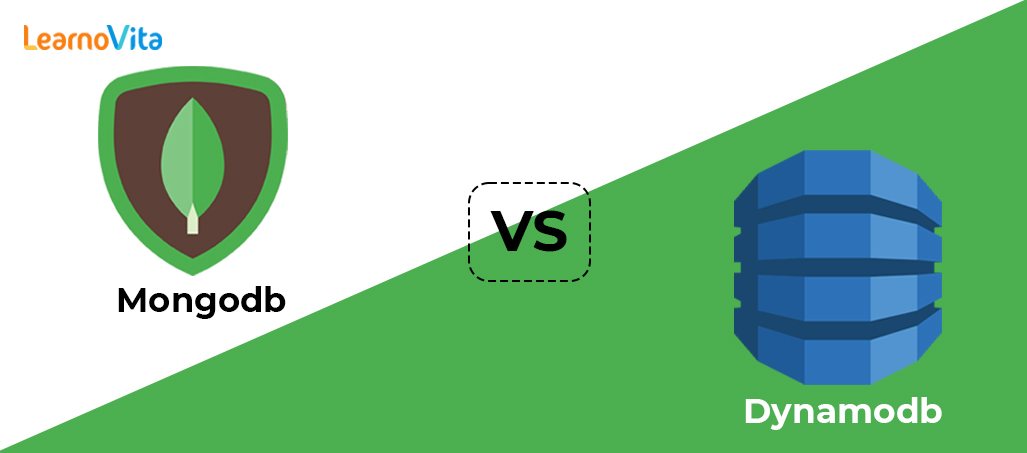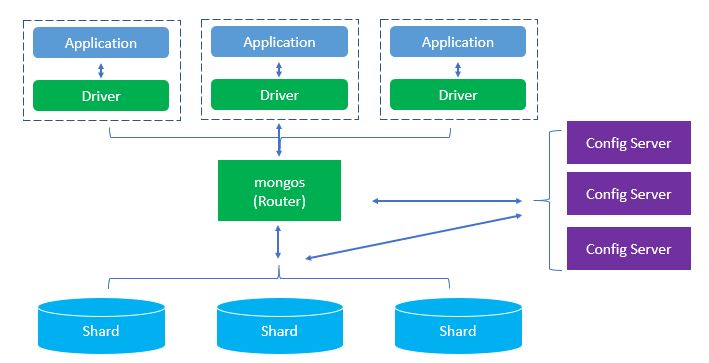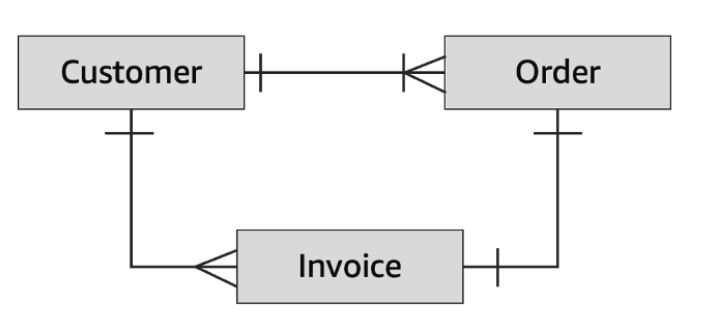
MongoDB vs DynamoDB | Know Their Differences and Which Should You Learn?
Last updated on 03rd Nov 2022, Artciles, Blog
- In this article you will get
- 1.What’s MongoDB?
- 2.MongoDB core factors
- 3.What’s DynamoDB?
- 4.MongoDB vs DynamoDB differences
- 5.Data model & schema
- 6.Querying data & indicators
- 7.Database security
- 8.Conclusion
What’s MongoDB?
MongoDB is a general- purpose, document- grounded distributed NoSQL database. It offers:
A free and product-ready community edition.MongoDB is an Atlas pall database. Unlike other immolations, MongoDB Atlas is pall- agnostic and can be stationed on any major pall provider with guaranteed vacuity and scalability to misbehave with all compliance and security norms. It also provides a free MongoDB cluster that can be used for operation development.

MongoDB core factors
Then are the main factors of MongoDB and their uses:
Collection – Table – A set of MongoDB documents.
Field – field/ column – A single element in a MongoDB document containing values as field and value dyads.
What’s DynamoDB?
DynamoDB is a personal NoSQL database by Amazon that supports crucial- value and document data offered through Amazon Web Services. This AWS pall-only immolation provides a scalable, largely available and secure managed database platform for any operation. DynamoDB provides limited storehouse, anytime free database cases to AWS druggies using its AWS Free Tier for testing and development purposes.
MongoDB vs DynamoDB differences
Both MongoDB and DynamoDB give analogous functionality and point sets. Still, there are some important screening factors when it comes to choosing between the two.
| MongoDB | DynamoDB |
|---|---|
| MongoDB is platform- agnostic. | DynamoDB is limited to AWS. |
| With MongoDB, you can configure databases to run nearly anywhere from an original machine, vessel, or on- demesne deployment to any pall provider. | Again, you can only configure and use DynamoDB through AWS. As a native AWS operation, DynamoDB has veritably tight integration with other tools and services offered by AWS. Although DynamoDB provides a downloadable interpretation for testing and development, product deployment relies on AWS. |
| DynamoDB is a completely managed database that allows druggies to start using the database directly, as AWS will manage all scaling, vacuity, and updates. It enables provisioning of multi-sector, largely available databases with just a many clicks, significantly reducing the need for devoted structure operation. | MongoDB, on the other hand, requires druggies to manage all the structure and configuration for a MongoDB grounded deployment. While this gives druggies the most control over the database, it also comes with increased complexity. |
| Fortunately, MongoDB Atlas addresses this complexity issue by offering a completely managed pall database service that can be stationed across AWS, Google Cloud, and Microsoft Azure. It also provides the easiest option to make a multi-cloud,multi-region NoSQL database result. | Both support Terraform as an structure law tool to fluently provision and manage database structure. |
Data model & schema
MongoDB uses the BSON format to store its data in documents, with support for a lesser variety of data types ranging from strings, timestamps to colorful integer and decimal types. Also, it supports document sizes up to 16 MB — and you can increase this limit by unyoking data into multiple documents using GridFS.
In discrepancy, DynamoDB provides a limited number of available data types while single particulars are limited to 400KB. MongoDB is a schema-free database. Nonetheless, it allows druggies to apply a schema with its own erected- in schema confirmation when needed.
- Document structure.
- Type of information.
- Ranch.
- Etcetera.
In discrepancy, DynamoDB is a schema-less database, but has no capability to apply a schema. Both databases support ACID deals.

Querying data & indicators
MongoDB provides further inflexibility in querying data as it enables druggies to collect and query data seamlessly in a number of ways, similar as.
- Single key.
- Borders.
- Graph traversal.
- Meets.
- Etcetera.
In discrepancy, DynamoDB natively only supports crucial- value queries, yet allows druggies to perform complex aggregations using other AWS services similar as Amazon Redshift and Elastic MapReduce. still, the use of these different services leads to.
- Cost
- Delay
- Complexity
When it comes to indexing, MongoDB supports creating indicators on any field in the document with full support of secondary indexing. In addition, it supports colorful indexing types similar as emulsion, ttl, hash, wildcard, textbook, array,etc. and indicators are explosively compatible with the underpinning data.
Meanwhile, DynamoDB supports two types of secondary indicators:
Global Secondary indicator( GSI), which spans all data in the base table across all partitions and can be stored and gauged independently from the underpinning data table.
Original Secondary indicator( LSI), which limits the compass of the base table, where the value of the table partition key matches the LSI partition key.
Both these databases support multi-document deals, but with crucial differences.
MongoDB supports reading and jotting of identical documents and fields in a single database sale.DynamoDB lacks support for multiple operations within a single sale.
Database security
DynamoDB comes with erected- in security stylish practices as their service is managed by AWS. The authentication and authorization model is grounded on AWS Identity and Access Management( IAM) which gives druggies fine- granulated control over the drugs, places, and programs used to interact with DynamoDB.
Likewise, DynamoDB isn’t directly connected to the wider Internet as requests are routed through an API gateway where authorization is managed by AWS.
In a standard MongoDB installation, druggies are responsible for utmost security practices ranging from managing access, routing business, firewalls, etc. Although it provides further control over the database, it’s a complex and time- consuming task that can not be scalable. fleetly changing development lifecycle.
Still, MongoDB Atlas provides better ignited- in security stylish practices from the onset, similar as encryption to network results and RBAC for authentication and authorization.
Database backup & recovery:
It supports both on- demand and automatic( nonstop) backup with point- in- time recovery. Any other backup can be fluently configured through an AWS tool like “ AWS Provisory ” and stored with AWS itself.
MongoDB Atlas also supports nonstop and on- demand pall backup, yet it’ll bear further configuration than DynamoDB to get everything configured duly. In addition, druggies are solely responsible for all backup and recovery operations in on- demesne or homemade MongoDB deployments – leading to fresh operating costs.
Choosing MongoDB vs DynamoDB:
Choosing the right database isn’t an easy choice. It depends on several factors:
- Stoner conditions
- Deployment
- Storehouse conditions
- Working capacity
- Other factors
Indeed when comparing MongoDB and DynamoDB, we can not compare them directly as they’re targeted for different use cases. For illustration, DynamoDB is a managed NoSQL database service, while MongoDB is NoSQL database software. Therefore, the closest direct comparison would be with MongoDB Atlas, the managed database offered by MongoDBInc. and DynamoDB.
Still, DynamoDB offers the stylish of the following:
If you’re presently using the AWS ecosystem to emplace and manage operations.
- Comity.
- Ease of use.
- Integration.
Yet its major strike is seller locking druggies without the capability to fluently change the deployment terrain.
MongoDB Atlas, on the other hand, frees druggies to use any of the supported pall providers:
- Produce MongoDB database cluster.
- Move to an on- demesne MongoDB database with minimum configuration.
- MongoDB Atlas provides a simple platform to organize and manage MongoDB clusters in a multi-cloud terrain, yet lacks the tight integration of an inbuilt product like DynamoDB.
- As a mature platform, MongoDB has an edge in the point set available for managing the underpinning data sets with introductory schema confirmation, multiple indicator type support, etc. also, you can configure it to meet utmost database conditions.
- Check out the sanctioned attestation for both MongoDB and DynamoDB as an excellent base to dive deeper into each database.
Conclusion
MongoDB and DynamoDB are both solid NoSQL databases to support different stoner requirements. Still, careful consideration is needed while opting for the stylish option. In the AWS world, it’s a no- brainer to go with AWS native NoSQL results if DynamoDB has all the needed features and functionality available.
MongoDB, on the other hand, provides robust enterprise-ready NoSQL databases with a rich point set that supports multi-vendor,multi-cloud deployment without seller locking druggies with personal results.
Are you looking training with Right Jobs?
Contact Us- What is MongoDB? : A Complete Guide with Best Practices
- What is MongoDB Port? : Free Guide Tutorial & REAL-TIME Examples
- MongoDB vs PostgreSQL | Know Their Differences and Which Should You Learn?
- MongoDB Vs MySQL | Know Their Differences and Which Should You Learn?
- What is MongoDB and its Queries | All you need to know [ OverView ]
Related Articles
Popular Courses
- Hadoop Developer Training
11025 Learners - Apache Spark With Scala Training
12022 Learners - Apache Storm Training
11141 Learners
- What is Dimension Reduction? | Know the techniques
- Difference between Data Lake vs Data Warehouse: A Complete Guide For Beginners with Best Practices
- What is Dimension Reduction? | Know the techniques
- What does the Yield keyword do and How to use Yield in python ? [ OverView ]
- Agile Sprint Planning | Everything You Need to Know
